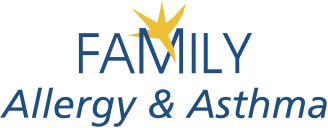When to Introduce Peanuts to Children

In the United States, approximately 2.5% of children, or nearly 2 million, suffer from peanut allergies. It is one of the top eight most common food allergies, and the number of cases has grown steadily over the last decade. As such, many parents of infants and toddlers often wonder if their child is allergic to peanuts and how to find out. It can be very frightening when a young child is at risk for a potentially deadly allergic reaction to very common food. Parents don’t always have control over what their children eat; however, many school cafeterias have outright banned peanut-based foods such as the standard peanut butter and jelly sandwich. Many parents ask us whether there is a “safe” way to introduce peanuts in their child’s diet, and if so, what they can do to determine if their child is at risk.
What age is safe to introduce peanuts?
One of the first questions a parent may ask is at what specific age they can introduce peanuts to their children. A better question to ask first is when they should NOT introduce peanuts. Recent research shows that the most at-risk group for developing a peanut allergy are infants with eczema and who have a relative with peanut allergies. The National Institute for Allergy and Infectious Disease (NIAID) recommends the earliest stage of peanut introduction be at around 6 months in children who have a moderate risk. Whole peanuts are a choking hazard for young children, peanut-based foods such as a peanut puff or peanut butter mixed with fruit or other food are best to use for introducing peanut foods to your infant.
The NIAID categorizes children into three different risk groups.
- The highest risk group includes children with moderate-to-severe eczema and/or an egg allergy or children with an immediate relative who is also allergic. An allergist should evaluate infants in the high-risk category before the introduction of peanut-based foods. The earliest age of introduction for high-risk children is between 4-6 months of age.
- The moderate-risk group includes children who have mild-to-moderate eczema, or there are no already present food allergies (such as an allergy to eggs). The guidelines recommend parents feed peanut-based foods at around 6 months of age.
- A low-risk child has no eczema or food allergies and can be introduced to peanut-based foods at the age-appropriate time and with a normal family and cultural practices. The majority of children will be in this risk group.
If my child has pre-existing allergies or a known relative with a peanut allergy what is the best procedure?
If the child DOES have symptoms of eczema, a preexisting food allergy, or a relative with a peanut allergy, it is strongly recommended that the child receive a test within the safety of an allergist’s office. A doctor can conduct blood or skin tests to determine if the child is at risk for the peanut allergy or not. Based on the results from this test, the allergist can help determine the best process for further introducing peanuts to the child. An Allergist “oral food challenge” test is considered the “gold standard” for introducing at-risk children to potential allergens such as peanuts.
What are symptoms of peanut allergy?
Other symptoms of a peanut allergy in undiagnosed children include wheezing, vomiting, diarrhea, tightness of the throat, pale blue skin, hives, or dizziness. These are symptoms of an anaphylaxis reaction that requires immediate attention and treatment. If a child is displaying these symptoms after eating peanuts, it may be time to see an allergist. We recommend keeping a journal of all the food the patient has recently eaten to help the doctors can correctly identify the food that is causing the allergic reaction.
If your child displays any of these symptoms, contact Family Allergy to ensure your child is following a safe diet.


